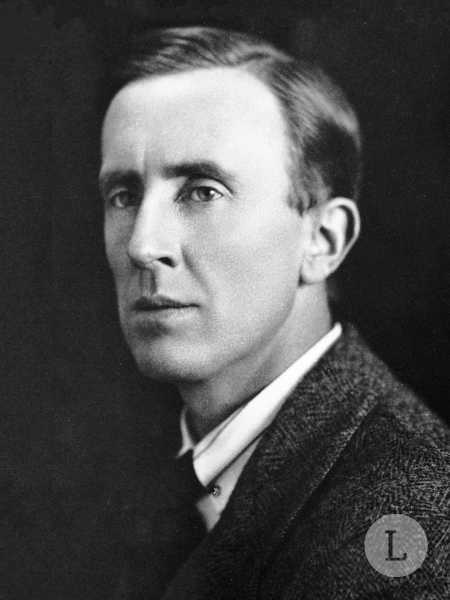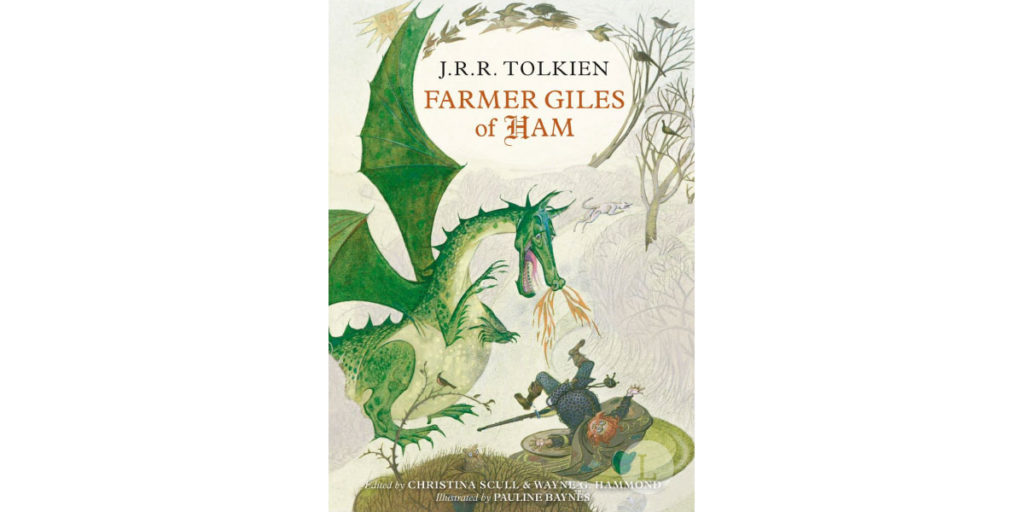
born: JANUARY 3, 1892
died: SEPTEMBER 2, 1973
nationality: ENGLISH
genre: FANTASY
J.R.R. Tolkien, full name John Ronald Reuel Tolkien, was an English writer, poet, and academic who is best known for his fantasy novels The Hobbit and The Lord of the Rings. He was born in Bloemfontein, South Africa on January 3, 1892, but moved to Birmingham, England with his family when he was three years old. His father, Arthur Tolkien, was an English bank manager and his mother, Mabel Tolkien, was a talented artist and musician.
Tolkien was an avid reader from a young age and was heavily influenced by Norse, Finnish, and Celtic mythology, as well as the works of William Morris, George MacDonald, and other fantasy writers. He was also a student of Anglo-Saxon and medieval literature, which would later inform his writing. He studied at Exeter College, Oxford, where he gained a degree in English Language and Literature. After graduation, he worked as a professor of Anglo-Saxon and English Language at Oxford University for most of his career, teaching at Pembroke College and later Merton College.
During his time at Oxford, Tolkien became close friends with fellow writer C.S. Lewis and the two of them were members of an informal literary group called the Inklings, where they would read their works-in-progress to each other and provide feedback. The group also included other notable writers such as Charles Williams and Owen Barfield.
WRITING
In the 1920s, Tolkien began working on the stories and languages that would eventually become The Hobbit and The Lord of the Rings. He spent many years developing the elaborate world of Middle-Earth, including its history, geography, and languages. He created many different languages for the different races of Middle-Earth, such as Elvish and Dwarvish, and even wrote an entire book on the subject called The Lays of Beleriand.
The Hobbit was published in 1937, and the success of the book led to the publication of the three-part The Lord of the Rings in the 1950s. The books were an instant success and have since become one of the best-selling books of all time. They have been translated into more than 50 languages and have sold over 250 million copies worldwide.
FAMOUS BOOKS

The Hobbit is a fantasy novel written by J. R. R. Tolkien and published in 1937. The story follows hobbit Bilbo Baggins as he joins a group of dwarves on a journey to reclaim their homeland from the dragon Smaug. Along the way, they encounter a variety of obstacles, including giant spiders, trolls, and giant eagles, as well as the mysterious and powerful Gollum.

The Fellowship of the Ring is the first volume of J.R.R. Tolkien’s epic fantasy novel The Lord of the Rings. It is a story set in the fantasy world of Middle-Earth, where hobbit Frodo Baggins is entrusted with the task of destroying the One Ring, a powerful and malevolent artifact created by the Dark Lord Sauron. The Ring holds the power to control the other Rings of Power and the fate of Middle-Earth is dependent on destroying it.

The Two Towers is the second book in J.R.R. Tolkien’s The Lord of the Rings trilogy. The story picks up where the first book, The Fellowship of the Ring left off, with the fellowship having been broken and the characters going their separate ways to continue their quest to destroy the One Ring and defeat the Dark Lord Sauron.

The Return of the King is the third and final novel in J. R. R. Tolkien’s The Lord of the Rings trilogy, following The Fellowship of the Ring and The Two Towers. The book is set in Middle-Earth, a fictional world created by Tolkien, and follows the quest of a hobbit named Frodo and his companions as they continue their journey to destroy the One Ring, a powerful artifact created by the dark lord Sauron to enslave all of Middle-Earth.

The Silmarillion is a collection of myths and legends that form the background and history of J.R.R. Tolkien’s Middle-Earth. The book is divided into five parts and covers a vast period of time, from the creation of the universe to the end of the First Age, a period spanning thousands of years.

Unfinished Tales of Númenor and Middle-Earth is a collection of stories and essays by J.R.R. Tolkien that were edited and published posthumously by his son Christopher Tolkien in 1980. The book includes a wide range of material, including both completed and unfinished stories, drafts, and essays that provide insight into the development of Tolkien’s mythological universe of Middle-Earth.

The Children of Húrin is a posthumously published novel by J.R.R. Tolkien that was edited and completed by his son, Christopher Tolkien. The novel is set in the same world as Tolkien’s more famous works, such as The Hobbit and The Lord of the Rings, and takes place during the First Age of Middle-earth, an era of great conflict and upheaval.

The History of Middle-Earth is a 12-volume series of books edited by Christopher Tolkien that provides a detailed look at the development of J.R.R. Tolkien’s Middle-Earth mythology. The series includes unpublished manuscripts, drafts, and notes that provide readers with a unique and fascinating glimpse into the creative process of one of the greatest writers of the 20th century.

Smith of Wootton Major is a novella by J.R.R. Tolkien that is often overlooked in discussions of his works, but nevertheless stands as an important and enduring contribution to the fantasy genre. The novella is notable for its emphasis on the power of imagination and creativity, as well as its exploration of themes of heroism, transformation, and transcendence.

Farmer Giles of Ham is a comic fantasy novella written by J.R.R. Tolkien and published in 1949. The story takes place in the fictional kingdom of Middle-England, which is populated by dragons, giants, and other mythical creatures. The protagonist of the story is Farmer Giles, a simple farmer who lives in the village of Ham.

Roverandom is a children’s fantasy novel by J.R.R. Tolkien that was first written in 1925 and published in 1998, posthumously. This book tells the tale of a young dog named Rover who gets transformed into a toy and embarks on a series of adventures to regain his original form.

Letters from Father Christmas is a collection of letters that J.R.R. Tolkien wrote to his children between 1920 and 1943. Each year, Tolkien would write a letter to his children in the guise of Father Christmas, telling them about his adventures at the North Pole and the antics of his helpers, including the mischievous polar bear, the clumsy reindeer, and the industrious elves.
LEGACY
Tolkien’s work has been credited with popularizing the modern fantasy genre and influencing countless other fantasy writers. He created a richly detailed world with its own history, mythology, and languages that has captivated readers for decades. His writing is characterized by its depth and complexity, as well as its strong sense of morality and the battle between good and evil. He was also known for his use of Christian themes and imagery in his work.
Tolkien’s work has also had a significant impact on popular culture, influencing films, video games, and other forms of media. The Lord of the Rings was adapted into a successful film trilogy directed by Peter Jackson, and The Hobbit was also adapted into a film trilogy. The films were critically acclaimed and grossed over $6 billion worldwide.
INTERESTING FACTS
- Love of Language: Tolkien was a philologist and a language enthusiast, and he spent much of his life developing the languages and cultures of Middle-Earth. He created a number of different languages, including Quenya and Sindarin, which are used in his Middle-Earth stories.
- World War I: Tolkien served in the British army during World War I and was sent to the front line in France. He saw action in the Battle of the Somme, where he contracted trench fever and was sent back to England to recover. He later described the war as a waste of life and a tragedy.
- Catholic Conversion: Tolkien was raised as an Anglican but later converted to Catholicism, which had a profound influence on his writing. He incorporated elements of Catholic theology and morality into his Middle-Earth stories, and many of his characters are seen as allegorical representations of Catholic virtues and vices.
- Love Story: Tolkien met his future wife, Edith Bratt, when he was 16 and she was 19. They fell in love but were forced to part ways when Tolkien went to Oxford University. They eventually reunited and were married in 1916. They remained married until Edith’s death in 1971.
- Oxford Professor: After serving in World War I, Tolkien went on to become an Oxford University professor, where he taught English language and literature. He was also a fellow of Merton College and a member of the Inklings, a literary group that included C.S. Lewis and other notable authors.
- Film Adaptations: Tolkien was initially skeptical of adaptations of his works and was unhappy with the 1956 film adaptation of The Lord of the Rings. However, he later became a fan of the 1978 animated film adaptation of The Lord of the Rings. He was not alive to see the successful film adaptations of his works that were produced in the 21st century.
- Literary Legacy: Tolkien’s works have had a lasting impact on the fantasy genre and continue to be widely read and adapted for film, television, and stage productions. The Lord of the Rings is considered to be one of the greatest works of fantasy literature and has sold millions of copies worldwide.
Tolkien died on September 2, 1973, in Bournemouth, England. He left behind a large body of work that continues to be widely read and celebrated today. His legacy continues to inspire new generations of writers and readers, and his work is considered to be a classic of fantasy literature.
AT THE END
In conclusion, J.R.R. Tolkien was a brilliant and influential writer, poet, and academic who is best known for his fantasy novels The Hobbit and The Lord of the Rings. He was born in South Africa and moved to England as a child, where he later studied at Oxford University and became a professor of Anglo-Saxon and English Language. He spent many years developing the elaborate world of Middle-Earth, including its history, geography, and languages, and he created many different languages for the different races of Middle-Earth, such as Elvish and Dwarvish. He spent many years working on The Hobbit and The Lord of the Rings before they were published and became instant bestsellers. His work has been credited with popularizing the modern fantasy genre and influencing countless other fantasy writers. He was also a devout Catholic and his faith had a significant influence on his writing. He died in 1973, but his legacy continues to inspire new generations of writers and readers, and his work is considered to be a classic of fantasy literature.
